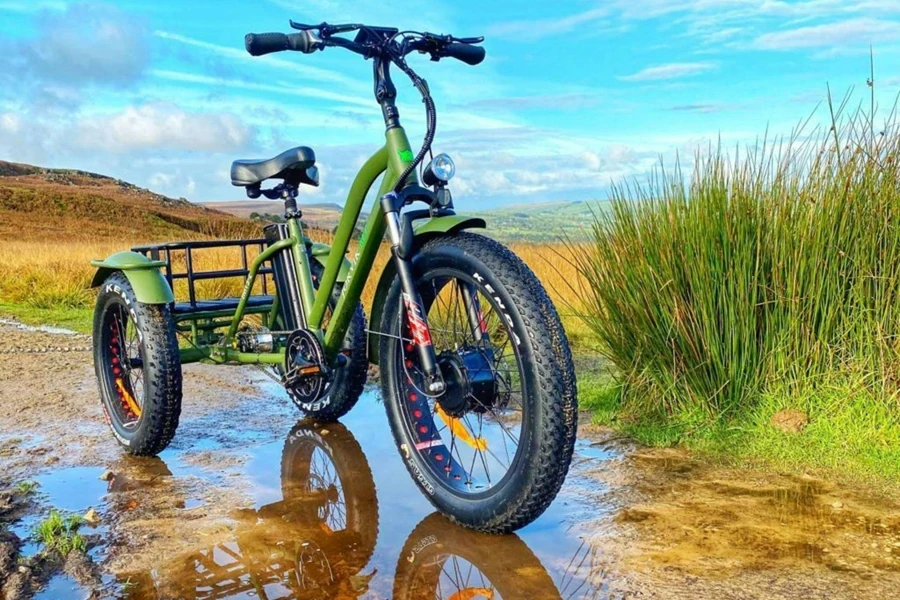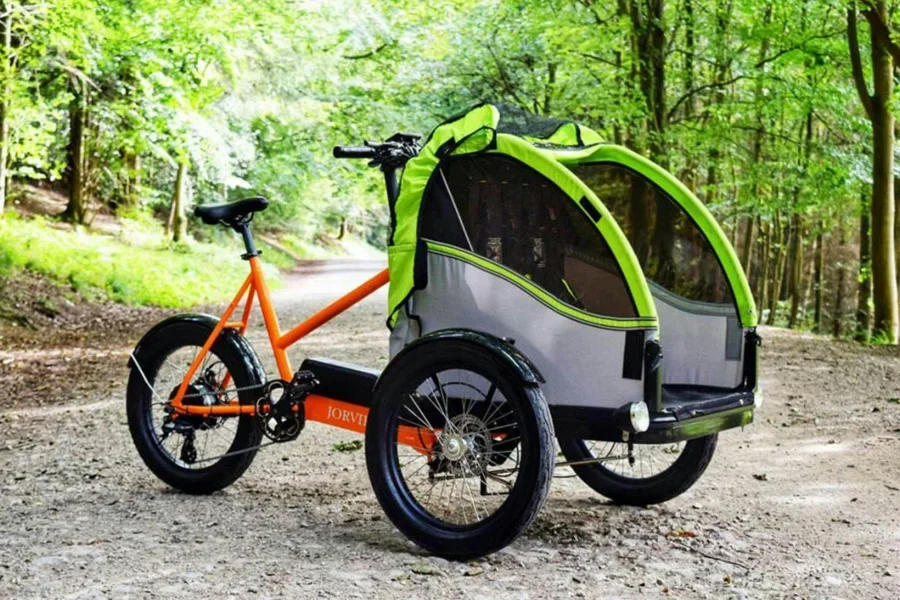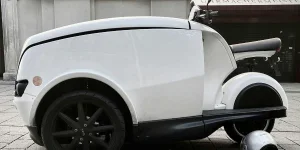Table of Contents
● Introduction
● Market overview
● Different types and their features
● Things to consider when selecting products
● Conclusion
Introduction
Electric tricycles are quickly becoming a favored choice for sustainable personal mobility, blending efficiency with eco-friendliness. These three-wheeled vehicles cater to a broad audience, offering enhanced stability and ease of use that appeal to both young adults and seniors alike. As urban centers grow more congested, electric tricycles present a practical solution for navigating busy streets with minimal environmental impact. With advancements in battery technology and motor efficiency, these vehicles are not only more accessible but also more powerful and versatile than ever before. Their increasing popularity underscores a shift towards more responsible, energy-efficient transportation options in today’s fast-paced world.

Market overview
The electric tricycle market has experienced significant growth, with a remarkable surge in both demand and technological advancement. According to Custom Market Insights, the market size was valued at approximately USD 3.4 billion in 2021 and is projected to reach around USD 15.5 billion by 2030, demonstrating a compound annual growth rate (CAGR) of about 30% from 2022 to 2030. This expansion is driven largely by environmental concerns, prompting consumers to seek more sustainable transportation solutions. Electric tricycles, combining motorized convenience with the benefits of electric power, have become particularly appealing due to their reduced environmental impact and adaptability to urban settings.
Key factors propelling the market growth include major advancements in battery technology, which enhance the range and efficiency of electric tricycles. Developments in lithium-ion batteries have been crucial, offering lighter, more powerful solutions that boost tricycle performance and appeal. Additionally, the competitive landscape features key players such as AKO Trike, Arcimoto, and ElectraMeccanica, who are at the forefront of innovation in this sector. These companies focus on continuous improvement of motor capabilities and battery life, ensuring electric tricycles are not only practical but also enjoyable for an increasingly broad user base.

Different types and their features of electric tricycles
Types of Electric Tricycles
Electric tricycles are categorized based on their intended use, with each type designed to cater to specific needs. Cargo electric tricycles are robust and built to manage heavy loads, making them suitable for commercial applications such as delivery services or transporting goods within urban areas. Their design typically includes large storage spaces and reinforced structures to support additional weight. Folding electric tricycles focus on compactness and ease of transport, appealing to urban commuters who may need to store their vehicle in small spaces or combine their trip with other modes of transportation. These models can easily be folded and carried in public transport or cars. Lastly, recreational electric tricycles are designed for comfort and leisure, often featuring more generous seating and smoother rides, suitable for leisurely activities in parks or on community paths.
Technical specifications and performance
The performance of electric tricycles is significantly influenced by the type of motor and battery used. Hub motors, integrated into the wheel, are typically used in both recreational and cargo tricycles due to their simplicity, quiet operation, and low maintenance needs. They are suitable for flat terrains and moderate loads. Mid-drive motors, which power the bike’s crank rather than the wheel, provide better torque and efficient power distribution, making them suitable for hilly terrains and heavy loads. When it comes to batteries, lithium-ion options are preferred for their lightweight, efficiency, and longer lifespan, which contribute to a lighter tricycle and longer travel distances on a single charge. Lead-acid batteries, while bulkier and offering a shorter lifespan, remain popular in budget-friendly models due to their lower cost.
Design elements and user experience
The design of electric tricycles focuses on enhancing the user experience through material choice and ergonomic features. Frames made from aluminum are prevalent due to their lightweight and resistance to rust, which facilitates easier handling and longevity, particularly in adverse weather conditions. Steel frames are valued for their strength and durability, especially in cargo tricycles that need to withstand heavier loads. Ergonomic considerations are central to tricycle design, with adjustable seats and handlebars allowing users to customize their riding position for maximum comfort and efficiency. This adaptability is crucial for reducing strain during longer rides and accommodating riders of different heights and riding preferences.

Things to consider when selecting electric tricycles
Purpose and usage
Choosing the right electric tricycle is largely determined by its intended use, which varies significantly among users. For urban commuters, a compact and efficient model that can navigate city traffic and fit into smaller parking spaces is suitable. Cargo electric tricycles are built with heavy-duty frames and larger storage capabilities to handle the demands of transporting goods, which are particularly suitable for businesses that conduct deliveries. For leisure activities, comfort and ease of use are prioritized, with features like a smooth ride and ease of operation being key considerations to enhance the recreational experience.
Battery life and range
The battery is a critical component in an electric tricycle, dictating both the range it can cover and the frequency at which it needs recharging. For those using their tricycle primarily for short daily commutes, a battery offering a range of 20-30 miles may be sufficient, while models equipped with batteries that provide 50-60 miles per charge are better suited for longer commutes or extended recreational outings. Lithium-ion batteries are preferred for their longer lifespans and lighter weight, significantly enhancing the range and overall performance of the tricycle.
Comfort and adjustability
Ergonomic design is paramount in electric tricycles to accommodate different body types and riding preferences, ensuring a comfortable experience for all users. Adjustable seats and handlebars allow the rider to find the optimal riding position, reducing fatigue and increasing comfort during longer trips. Additionally, features like padded seats and suspension systems improve ride quality over various terrains, making the tricycle more versatile and enjoyable to use across different environments.
Safety features
Safety is a major consideration in the design of electric tricycles. Effective braking systems are essential for ensuring the rider can stop quickly and safely, particularly in urban environments where sudden stops are common. Disc brakes are often used for their reliability and effectiveness in different weather conditions. Stability is another critical feature, with wider wheelbases and lower centers of gravity helping to prevent tipping and ensure a safer ride. Lighting and reflective elements also contribute to safety by making the tricycle more visible to other road users, especially in low-light conditions.
Conclusion
When selecting an electric tricycle, it’s essential to consider personal needs alongside market offerings to ensure the best fit. Modern electric tricycles blend advanced technology with enhanced comfort features, catering to a diverse range of preferences and requirements. Whether it’s for commuting, cargo transport, or leisure, each tricycle type is designed with specific functionalities that address different aspects of usage, from battery range and motor type to ergonomic design and safety features. This integration of technology and comfort in electric tricycles not only improves the user experience but also encourages a shift towards more sustainable and efficient modes of transportation. As the market continues to evolve, potential buyers are presented with an increasing array of options, making it crucial to assess both personal needs and the latest technological advancements to make an informed choice that aligns with their lifestyle and mobility demands.




